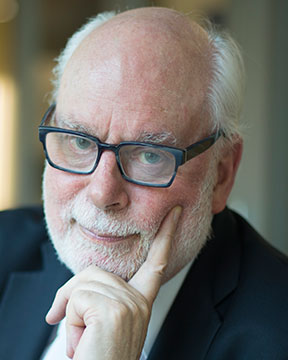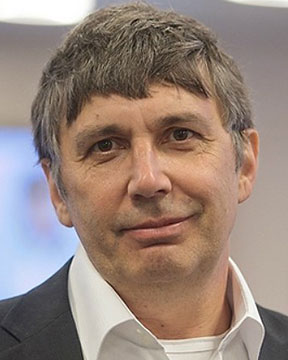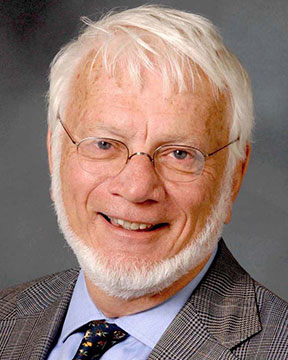



















Briefly outlined here are the trends and developments in advanced manufacturing of advanced materials from macro- to nanoscale subjected to static, low speed / high speed / hypervelocity impact and shock loading, with sustainable industrial applications to net-shape manufacturing, bioengineering, transport, energy and environment, defense, and safety, which are the outcome of the very extensive work on these scientific and industrial areas performed by the author and his international research team spanning over 50 years. The impact of such advanced materials, manufacturing and loading techniques, products and applications on many technological areas, e.g. the manufacturing / machine tool sector, communications / data storage, transportation, health treatment, energy conservation, environmental and human-life protection, are significant and highly beneficial.
Keywords: Biomechanics; Biomedical engineering; Defense; Electromagnetics; Environment; Explosives; High strain-rate phenomena; Low/High speed impact loading; Mechanics; Nanocomposites; Nanostructured materials; Precision/Ultraprecision manufacturing; Safety; Shock treatment; Shock-waves loading; Structural plasticity; Surface engineering/Wear, Non-conventional techniques; Transport/Crashworthiness of Vehicles;The successful story of YILMADEN corporation in digitalizing the mining industry is described, along with its effects in increasing productivity, developing the society, and protecting the environment in the notable path to a zero-free waste industry.
Keywords: Environmental;The discovery of the ribosome structure was not only a scientific achievement in of itself, but is also a direct influence on the development of new antibiotics that generally do not have the drawbacks of current antibiotics. The history of discovering the structure of the ribosome is described, along with its direct link with new antibiotics.
Keywords: Antibiotics; Ribosome; Human health;Graphene is the thinnest known material and a truly two-dimensional crystal. It is in fact a mono-atomically thin film of carbon atoms arranged laterally in a honeycomb benzene ring like structure. It was previously considered to be physically unstable until it was shown to exist in the free state. The history of the discovery of graphene is described, along with its largest and fastest number of applications in the history of scientific discoveries.
Keywords: Graphene; Innovation; Carbon;200 years of basic research produced Nuclear Magnetic Resonance as it is known today, and has led to its essential role in improving daily human life. A brief history of the discoveries and developments that have paved the way to understanding Nuclear Magnetic Resonance is presented in terms of its fundamentals and applications.
Keywords: Nuclear; Magnets; Physics;The new concept of intrapreneurship as opposed to entrepreneurship is presented, and the similarities and differences that exist between those two concepts are described. While entrepreneurship is undertaking risk to create something new at the societal level, intrapreneurship is doing the same thing but within an organization. The advantages of applying the right criteria for intrapreneurship within a specific organization are highlighted.
Keywords: Intrapreneurship; Entrepreneurship.Rare-Earth Transition Metal permanent magnets (RETM-PM) are vital components in the rapidly-developing renewable energy sector, where the motors require strong magnets with the ability to operate at temperatures well over 100°C. To achieve high coercivity, remanence and consequently high energy product (the figure of merit for PM) at elevated temperatures, the addition of heavy rare earths (HREs) to the basic Nd-Fe-B composition is needed. However, HREs are on the very top of the list of Critical Raw Materials (CRM) published by the EC in 2017.
In the frame of the “Magnetic Materials Group” of IJS, Ljubljana, we have developed an innovative, and sustainable way to drastically decrease the amount of HREs needed for the highest-level performance of PM. In the second part of the talk, we will focus on the need for recycling of the end-of-use (EoU) RETM-PM.
To drastically reduce the use of HREs, we focused on developing a new method, which was designed to enable us to achieve the properties needed for high-temperature applications with the lowest amount of scarce elements. With our new inventive technique, further transferred to pilot production, we could minimize down to 0.2 at % the amount of HREs used whereas the improvement of coercivity was 30 % with minimal loss in remanence. The total saving of the HREs turned to be 16-times less for the same performance, which is a significant contribution to the world economy and clean, sustainable environment. In studying the mechanism for such an improvement in coercivity without significantly decreasing the remanence, a detailed microstructure investigation was performed by using high-resolution transmission electron microscopy.
Besides the use of these newly developed high energy magnets for electric and hybrid cars as well as wind turbine generators, another vital application is as the source of the magnetic field in the development of the new magnetic cooling devices.
Since Europe lacks any significant REE deposits that can be exploited to reduce its import dependency, it is essential to be ahead of another rare-earth crisis, like the one witnessed in 2009–2010. European industry needs approximately 2,000–3,000 tons/year of REEs, all of which have to be imported. Producers of REE-based permanent magnets use the vast majority of these REEs. At the same time, the current recycling rate for REEs contained in these magnets is a pitiful < 1%. Whatever the way we look at this, the recovery, reprocessing and reuse of REE permanent magnets represent the only viable route to ensuring a sustainable future for this critical European industry (nearly everything that uses electricity also uses magnets).
With a view at sustainability and circular economy, we will present our continuous efforts to develop and demonstrate innovative pilot plants at Technology Readiness Levels (TRLs) 6–7 for the clean and sustainable recycling of these most critical raw materials from secondary EoU PM sources in the EU.
We are investigating different ways to recycle and reprocess the EoU Nd-Fe-B PMs. As it is vital for the applications to keep or even surpass the properties of the original magnets, we are utilizing a contemporary technique of spark plasma sintering (SPS) that assures a minimized grain coarsening in the 500 nm range. So far, we have demonstrated an improvement in coercivity of the raw powder up to HC = 1120 kA/m with BHmax = 95 kJ/m3, that matches the one achieved in fresh HDDR+SPS-ed samples. From the perspective of chemical recycling of the EoU Nd-Fe-B magnets, we will report on a successful synthesis of Nd-Fe-based deposits using ionic liquids. The XRD, VSM, thermomagnetic, Mössbauer and HRTEM/EDXS/EELS studies are going to be discussed with regards to the properties of the obtained Nd-Fe-deposits.
This lecture outlines the translation of the genetic code into proteins, and the new generation of antibiotics, based on the scientific work that was evaluated for the Nobel Prize.
Keywords: Chemical; Bacteria; Antibiotics;Sustainable development is a comprehensive and complex system of systems requiring multidisciplinary and interdisciplinary science and technology inputs with economic, environmental and social objectives. The trade space is very wide, and the multitude of trade-offs generate considerable challenges and make it often difficult to achieve an effective balance. During the last sixty years the planet's population has grown exponentially, from 2.5 to 7.5 billion people, and the technological progress achieved has been tremendous, especially in the industrialized countries. These trends are expected to continue, even at faster rates. All these associated technological activities in the pursuit of better living standards have created a considerable depletion of resources and pollution of land, water and air. Thus, and because most of our resources are limited, it is imperative that we achieve more with less. In broad terms, sustainable development is achieved when the present needs and challenges are met without placing in jeopardy the ability of future generations to meet their own needs and challenges. The global energy demand is expected to increase exponentially, associated with the increase in the global population. The three main reserves of fossil fuels: oil, natural gas and coal are decreasing very rapidly and will not always be available to meet the global demands soon. The continuation of fossil fuel emissions will be environmentally deleterious, and there is already a need to remediate some of the deleterious effects already sustained by the environment. Energy security has become a major and critical issue as fossil fuels are confined to a few areas in the world and their availability is controlled by political, economic and ecological factors. This means that in a short term, considerable energy efficiencies and savings must be achieved, and alternative and renewable sources of energy must be developed. To enable all these technologies considerable advances in energy storage and conversion materials and technologies such as batteries, super capacitors and fuel cells must be achieved. The transportation industry has by far the largest share of global oil consumption and is now the major producer of global greenhouse gas emissions in most industrialized countries. Mobility projections show that it is expected to triple by 2050 with associated energy use and environmental impact. Considerable achievements have recently been obtained in the development of new and advanced materials and technologies such as light weight metallic alloys, metal matrix composites, intermetallics, carbon fiber composites and hybrid materials. Nano, nano-structured and nano-hybrid materials systems and nanotechnologies have also been deployed with considerable impact. In addition, component design using a materials and functional systems integration approach is being used very effectively, resulting in considerable system improvements and energy efficiencies. This resulted in their introduction in the energy, transportation and manufacturing industries in a wide variety of devices and components with considerable technological, economic, environment and social impacts.
Keywords: Alternative energy sources; Biomaterials; Environment; Nanocomposites; Nanomaterials; New and advanced materials; New and advanced technology; Renewable energy; Sustainable development;Systematic research within borders and boundaries predetermined by government and funding organizations can produce good results in scientific discoveries, but rarely do they disrupt the existing knowledge or established industries. However, serendipity, or a set of lucky circumstances in which research goes outside the pre-existing borders and boundaries, end up making major scientific discoveries that always disrupt existing knowledge and established industries. A description of both approaches is carried out and the importance of serendipity in science and technology is emphasized.
Keywords: Innovation;Summit Thematic Opening
In the context of analyzing the relationship between sustainability and human life expectancy, the results of a major study on life expectancy by a county-by-county basis in the USA are given, and the differences that exist when compared to the national life-expectancy is highlighted. An overall life expectancy map in the USA is developed and presented, and life expectancy determinants are described.
Keywords: Life expectancy; Health; Sustainability;The "unreasonable" effectiveness of mathematics in physics was famously proposed as a problem by Eugene Wigner in 1960 [1], and little progress has been made towards an explanation in the intervening years. It is, however, a very significant question, as the vast bulk of mathematics has never found a significant physical application, while the physical world often resists the easy extensions that mathematics could provide. For all, the many theories based on higher dimensionalities, for example, the world as normally observed seems to be confined to a 3-dimensional space and 1-dimensional time. It is proposed here that the mathematics that is most successfully used in physics is not an "application" of an external system, but a natural growth that emerges with the fundamental concepts it describes. Capturing that growth within a universal rewrite system, based on computer science principles, means that we can find the mathematical representations that are closest to the natural processes they describe, which are not always the ones most commonly used. This leads to an improved understanding of many aspects of physics, and even other areas of science, such as biology, where some of the same mathematical principles apply.
Keywords: Mathematics;Nitric Oxide was once considered only as a compound that polluted the atmosphere. This was until when cyclic GMP signaling pathways were discovered, and this transformed this inorganic component from a harmful to a beneficial one for human health. This presentation shows how this signaling works, and the positive role of Nitric Oxides in numerous human health deficiencies.
Thematic Address 1
Thematic Address 2